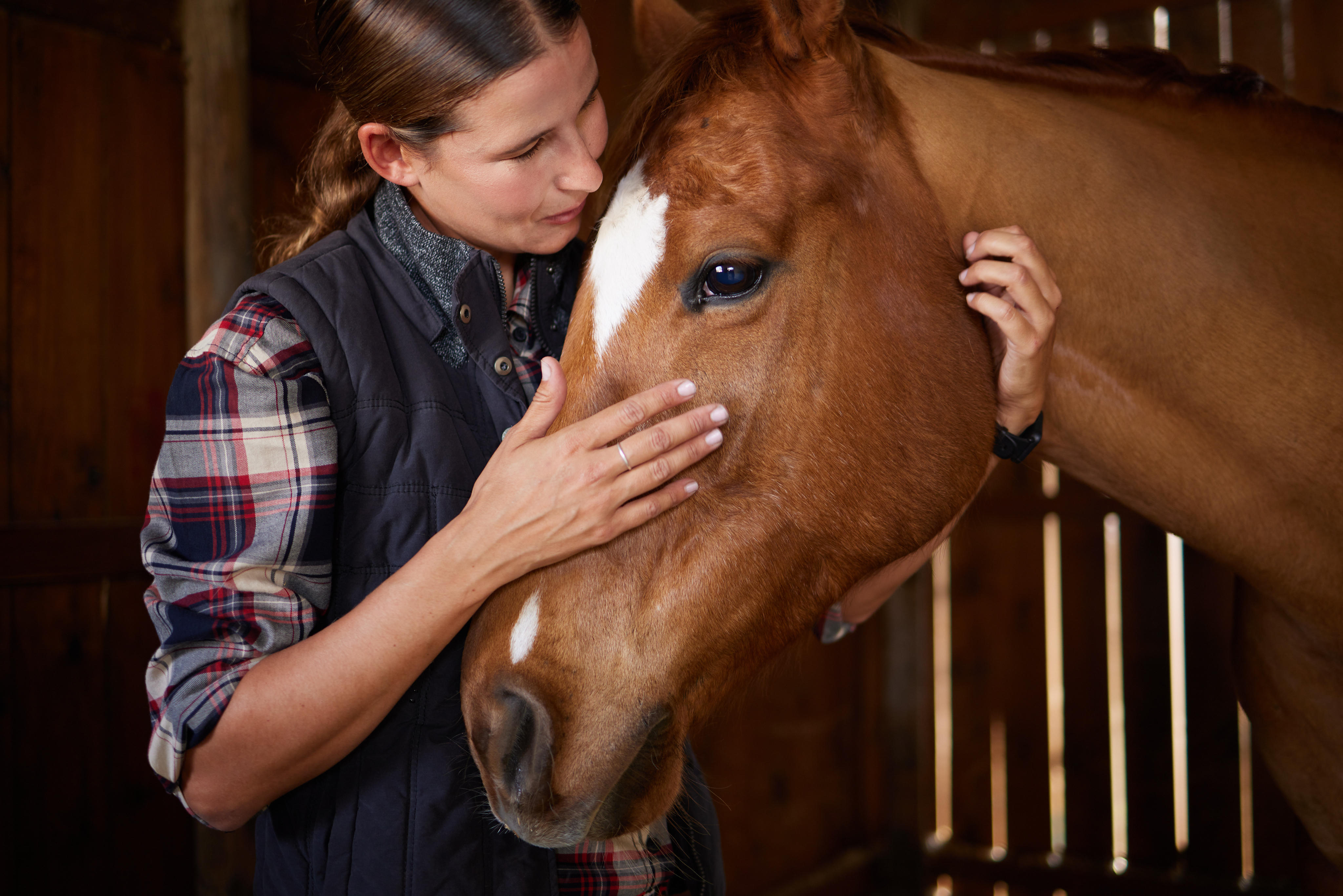Parasites 101
SAFE-GUARD® (fenbendazole) is highly effective in the treatment of six species of the four most common intestinal worm types found in outdoor dogs.
6-in-1 Protection Given Two Times a Year*
Don’t sit out on outdoor adventures with your dog. With 6-in-1 protection given two times a year, you and your dog can enjoy nature and feel safe while you do it.
Understand the Threats
Don’t sit out on outdoor adventures with your dog. With 6-in-1 protection given two times a year, you and your dog can enjoy nature and feel safe while you do it.Don’t sit out on outdoor adventures with your dog. With 6-in-1 protection given two times a year, you and your dog can enjoy nature and feel safe while you do it.
Roundworm & Hookworm
The risk to your family: zoonotic disease
Roundworms and hookworms can cause zoonotic disease, meaning they can cause illnesses in people too, especially children. That’s why preventing parasite infestations in dogs is not only important for the overall health of the dog, but also reduces human health risks.1
Roundworm & Hookworm
Think your heartworm treatment has your dog covered? Think again.
While many heartworm treatments include roundworm and hookworm protection, they may not treat tapeworms and whipworms, which can be especially problematic for outdoor dogs.
Dangerous Parasites to the Outdoor Dog
The more your dog is outside, the greater the risk of infection
Whipworm
(Trichuris vulpis)
Canine Whipworms (Trichuris vulpis) get their name from their whip-like shape.
- Whipworms infect not only dogs, but also wildlife such as foxes and coyotes.
- Eggs are passed to the environment in the feces on an intermittent basis where they remain.
- Not all dewormers target Whipworms. SAFE-GUARD is an effective way to combat this parasite.
A Common Threat
This intestinal parasite is quite prevalent throughout the U.S.1, especially in adult dogs.
Infection
Dogs become infected by accidentally eating whipworm eggs from contaminated soil (while grooming, for example).
Treatment
Because most canine worm treatment products are not effective against whipworms, extra care must be taken when choosing a dog dewormer for whipworms.
Fenbendazole, the active ingredient in SAFE-GUARD Canine, is recommended and is commonly used to control these parasites.
Taenia Tapeworms
(Taenia pisiformis)
Tapeworms are thin and flat, like strips of tape and are made up of a head from which a series of segments will grow.
Taenia Pisiformis
Dogs become infected with Taenia pisiformis tapeworms by eating rabbits, which may carry the infective stage of this worm.
Other Species
Dogs may also become infected with other species of tapeworms by eating fleas or other intermediate hosts that carry the infective stage.
- Tapeworms consist of a head from which a series of segments grow.
- Eggs are found in the individual segments which are passed in the feces.
- Rabbits or rodents accidentally ingest the eggs when grazing.
Treatment
Treatment and control of canine tapeworm infections involves the use of dog dewormers that effectively remove the tapeworm head, as well as the segments.
Hookworm
(Ancylostoma caninum & Uncinaria stenocephala)
There are two kinds of canine hookworm that infect dogs – Uncinaria stenocephala and Ancylostoma caninum.
- Female worms lay eggs by the thousands which are passed in the feces.
- Eggs survive well in mild temperatures, shade and moist soil or grass.
- Outdoors dogs can be infected and re-infected by accidently eating the eggs or larvae (immature worms) in the environment.
Risks in the Environment
Dogs can be infected by accidentally eating hookworm eggs and larvae in the environment or through larvae penetration of the skin or lining of the mouth.
Treatment
A dog infected with hookworms should be treated with a fast-acting, highly effective and safe dewormer, such as fenbendazole. This should be followed by a second treatment, two weeks later. In severe cases, blood transfusions and supportive therapy may be required.
Roundworm – Most Common
(Toxocara canis & Toxascaris leonina)
Roundworms are the most common intestinal parasites found in dogs – and especially in young puppies, that are often infected at birth, or soon thereafter.
- Female worms lay several thousand eggs a day, which are passed in the feces.
- Eggs can survive in the environment for several years.
- Canine roundworm infections are zoonotic meaning they can be transmitted from animals to humans.
Puppies
Puppies can also become infected by eating dirt or feces containing worm eggs and larvae, by licking contaminated fur or paws or by drinking contaminated water.
The larvae of one of the roundworms – Toxocara canis – lie dormant in the tissues of most adult female dogs. Hormonal changes during pregnancy can activate these larvae, which then migrate through the placenta to infect the unborn puppies.
Some immature forms of canine roundworms can also be transmitted through the nursing mother’s milk.
Adult Dogs
Most adult dogs become infected through contact with worm eggs and larvae in the environment
Treatment
Since most puppies have roundworms, it is recommended that you give your dog a broad-spectrum dewormer that is effective against the major canine intestinal parasites, according to the following schedule:
- at six, eight, 10 and 12 weeks of age
- once a month until the age of six months
- at least every six months after the age of six months
Know The Enemy
Parasite Sources, Symptoms & Prevalence
| ENEMY | INFESTATION SOURCE | SYMPTOMS | PREVALANCE |
|---|---|---|---|
| Roundworm | – mother
– soil – feces | – diarrhea
– vomiting – stunted growth – rough coat – bloated belly | Widespread in North America, infects nearly all puppies, eggs survive in soil for several years |
| Hookworm | – mother
– soil – feces – through pads on feet | – weight loss
– anemia – bloody diarrhea | Also common in North America, multiple infestation sources, consumes dog’s blood causing anemia and other symptoms |
| Taenia Tapeworm | – rabbits
– rodents | – aching
– weight loss – segments visible in stool | More common in outdoor dogs since source is infected rabbits or rodents, hard to diagnose |
| Whipworm | – ingestion of feces or soil | – diarrhea
– anemia – dehydration – loss of appetite | Growing concern in recent years; more common in outdoor dogs due to potential contact with foxes and coyotes, which act as source of infection |
Why SAFE-GUARD? 6-in-1 Protection.
With parasite protection in SAFE-GUARD Canine, given two times a year, you and your dog can enjoy nature and feel safe while you do it.
Important Safety Information:
For animal use only. Do not use in pups younger than 6 weeks. Do not deworm a dog or puppy that is sick. Approximately 1% of dogs had vomiting associated with the use of this product. Consult your veterinarian for help in the diagnosis, treatment and control of parasitism.
References:
- Data on file.
* Dogs over six months of age should be dewormed at least twice a year with SAFE-GUARD Canine Dewormer. For puppies younger than six months, see product label.




 Go To United States
Go To United States Algeria
Algeria Argentina
Argentina Australia
Australia Austria
Austria Bahrain
Bahrain Belgium (Dutch)
Belgium (Dutch) Brazil
Brazil Canada (English)
Canada (English) Chile
Chile Colombia
Colombia Croatia
Croatia Czech Republic
Czech Republic Denmark
Denmark Ecuador
Ecuador Egypt
Egypt Finland
Finland France
France Germany
Germany Greece
Greece Hungary
Hungary India
India Indonesia
Indonesia Iraq
Iraq Ireland
Ireland Israel
Israel Italy
Italy Japan
Japan Jordan
Jordan Kuwait
Kuwait Lebanon
Lebanon Malaysia
Malaysia Mexico
Mexico Morocco
Morocco Netherlands
Netherlands New Zealand
New Zealand Norway
Norway Oman
Oman Panama
Panama Peru
Peru Philippines
Philippines Poland
Poland Portugal
Portugal Qatar
Qatar Romania
Romania Russian Federation
Russian Federation Saudi Arabia
Saudi Arabia South Africa
South Africa South Korea
South Korea Spain
Spain Sweden
Sweden Switzerland (French)
Switzerland (French) Taiwan
Taiwan Thailand
Thailand Tunisia
Tunisia Turkey
Turkey Ukraine
Ukraine United Arab Emirates
United Arab Emirates United Kingdom
United Kingdom Uruguay
Uruguay Yemen
Yemen Global
Global